Health center
Meliva MVZ Westpfalz
Surgical Clinic, Landstuhl
Konrad-Adenauer-Strasse 4 66849 Landstuhl
Surgical treatments in Landstuhl
Welcome to the Meliva MVZ Westpfalz Surgical Clinic in Landstuhl. We are a team of experienced surgeons, offering numerous surgical procedures to help improve your health and sense of well-being.
Our treatments include general surgical procedures, hand surgery, trauma surgery, endoscopic microsurgical procedures, vascular surgery, proctological procedures, and much more. We offer gentle, effective treatments to expedite your recovery.
Our team: Looking after your health

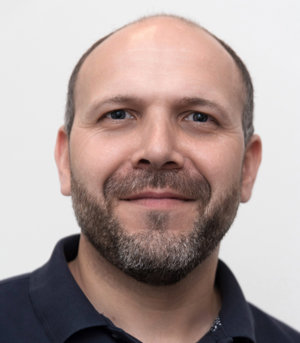
Range of treatments
General surgery
Other surgery types
Proctological surgery
Trauma surgery
Vascular diagnostics
Vascular surgery
Endoscopic microsurgery
Hand surgery, including for nerve compression syndrome
Physical therapy
Treatment for acute and chronic ailments of the abdominal cavity and abdominal wall
Vascular screening
The list above is a selection of the services we offer. Please don’t hesitate to contact us if you have questions about other treatment options.
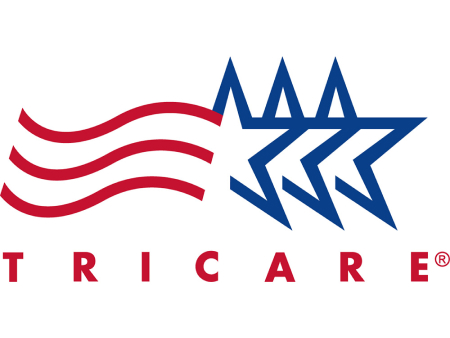
We accept Tricare Insurance
TRICARE is the health care program serving active duty service members, National Guard and Reserve members, retirees, their families, survivors and certain former spouses worldwide.
Costs vary depending on the sponsor’s military status (active duty family members vs. retirees, their families and others). After you’ve met an annual deductible, you’re responsible to pay a cost-share (or percentage).

Obesity Competence Centre West Palatinate Landstuhl
The surgery department of Meliva MVZ Westpfalz was certified by the German Society for General and Visceral Surgery (DGAV) in cooperation with the surgery department of the Nardini Clinic as a competence centre for obesity surgery and metabolic surgery on 31.12.21.
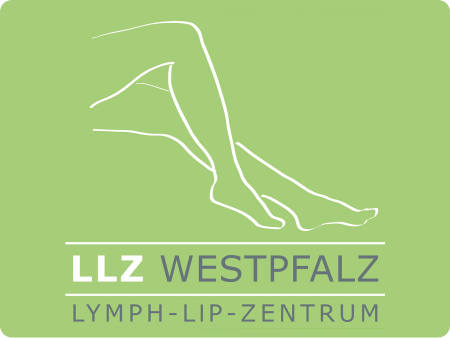
The treatment center for lymphedema and lipedema
As a “lymphatic edema/lip edema center” (LLZ), we offer treatment of edema during surgical interventions, cancer diseases/cancer operations, injuries, genetic diseases, varicose veins, lymphatic drainage disorders, joint diseases and lipedema.
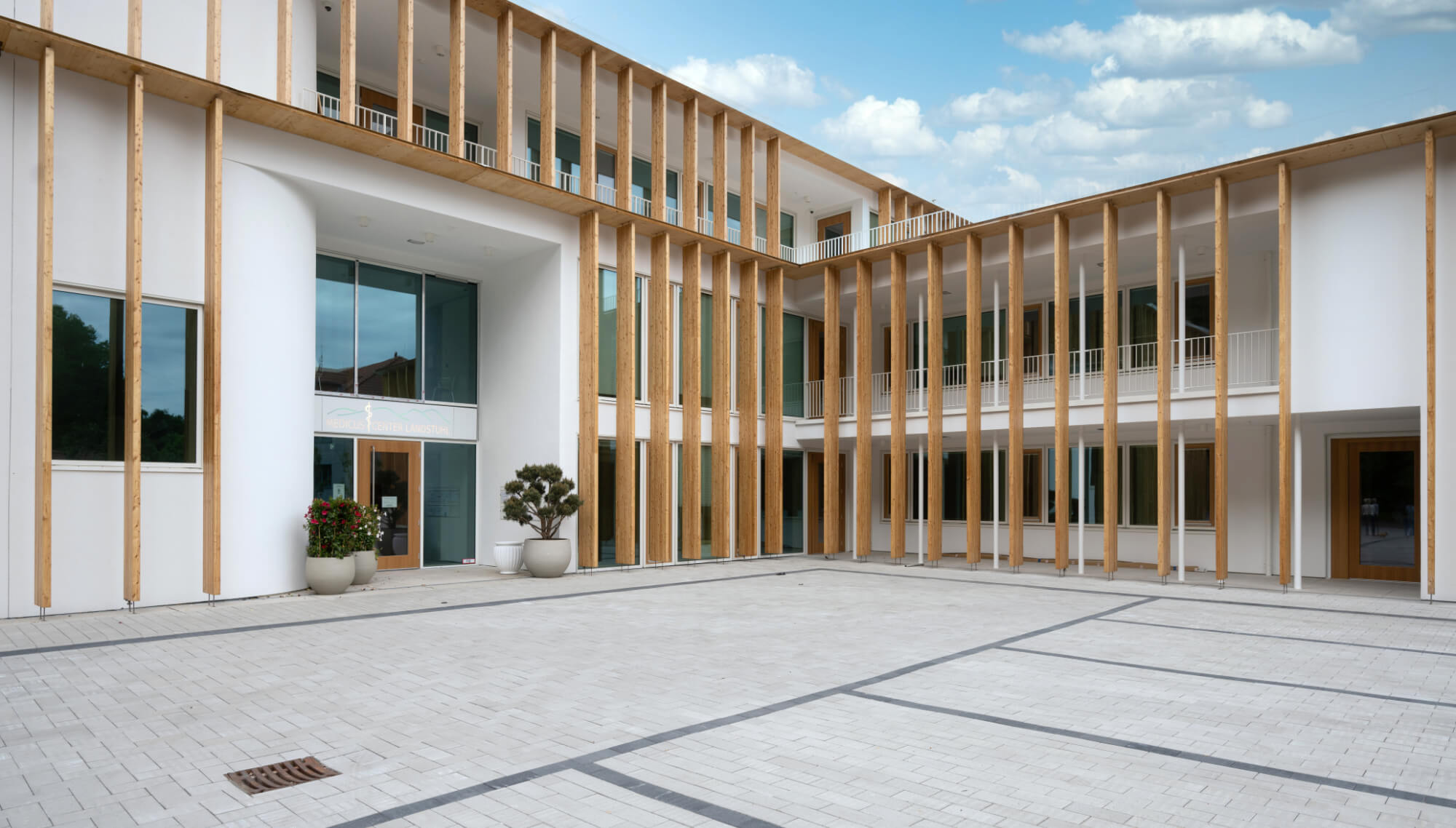
Expert, reliable treatment
Our range of treatments includes general surgery, hand surgery,
trauma surgery, endoscopic microsurgery, vascular surgery and
proctological surgery as well as X-rays and ultrasound scans. We also
offer non-surgical treatments and physical therapy. Find out more
about the services we offer.

The Landstuhl Surgery of the Meliva MVZ Westpfalz
Helpful Information
Circulatory Disorders: Different Arterial Diseases
Leg Arteries
- Ultrasound Diagnostics of Arterial Circulatory Disorders: Employing ultrasound technology to examine and diagnose circulatory issues in the arteries.
- Pressure Measurement and ABI Determination: Measuring pressure in the legs and determining the Ankle-Brachial Index (ABI) to assess blood flow and predict the severity of peripheral arterial disease.
- Conservative Therapy for Arterial Circulatory Disorders: Utilizing non-invasive methods and medical management to treat arterial circulatory issues.
- Surgical Therapy: Including bypass surgeries, vascular expansion, and stent implantations to improve blood flow.
- Diagnosis and Therapy for Diabetic Foot Syndrome: Identifying and addressing the issues related to the complex condition of diabetic foot syndrome, such as ulcers and infections.
Stroke
- Ultrasound Examination of Cerebral Vessels: Using ultrasound to inspect the blood vessels that supply the brain, aiding in understanding and assessing the condition of the cerebral circulation.
- Measurement of Vascular Wall Thickness (Intima-Media Thickness): Evaluating the thickness of the vessel wall to estimate stroke risk and understand arterial health.
- Radiological Interventional Therapy: Utilizing radiology-guided interventions to treat and manage cerebrovascular issues.
- Carotid (Carotid Artery) Surgeries: Performing surgical interventions on the carotid artery to prevent stroke and manage vascular disease.
Vascular Expansions (Aneurysms)
- Ultrasound Examination of the Abdominal and Pelvic Arteries: Conducting ultrasound studies to inspect and assess the condition of the arteries in the abdomen and pelvis.
- Stent Implantations for Abdominal Aortic Aneurysm Neutralization (EVAR Method): Utilizing stents, particularly using the Endovascular Aneurysm Repair (EVAR) method, to treat and manage abdominal aortic aneurysms by providing a stable pathway for blood flow.
Minimal-Invasive Procedures
Minimal-invasive procedures encompass surgical interventions that minimize trauma to the skin, soft tissues, and internal structures. The terms “endoscopy,” “laparoscopy” (abdominal examination), and “minimal-invasive surgery” (MIS) are synonymously used in this context. MIS has become prevalent across various medical fields, replacing traditional methods involving significant incisions. The microsurgical approaches highlight benefits such as substantially reduced discomfort, rapid recovery, and quicker post-operative mobilization. Furthermore, complication rates, especially infections, are significantly diminished. Thanks to diminished post-operative pain and accelerated recovery, these procedures are increasingly being performed on an outpatient basis.
Abdominal Wall Hernia
An abdominal wall hernia refers to a sac-like protrusion of the peritoneum through a congenital or acquired weakness in the abdominal wall. Congenital weaknesses are often muscle-free zones around the navel, midline, and groin, while acquired weaknesses often occur in scar tissue post-abdominal surgeries. For various reasons, the connective or scar tissue can rupture, allowing the peritoneum, with hernia content, to prominently protrude into the abdominal wall, which can be palpated as a bulge. Any abdominal organ can become hernia content, though it’s commonly the intestine. Usually, the hernia can be gently pushed back, especially when lying down. The major risk with abdominal wall hernias is the constriction, interrupting blood supply to the internal intestine, which can quickly lead to a life-threatening situation. Given that the risk of constriction can often not be accurately anticipated, surgery is recommended.
Inguinal Hernia
The inguinal hernia is the most common hernia type, with approximately 250,000 inguinal hernias surgically addressed annually in Germany. Predominantly affecting men, the hernia arises in an anatomical weakness within a muscle-free area above the inguinal ligament. Various forms, such as indirect, direct inguinal hernias, and scrotal hernias, are differentiated by their location and extent.
A specific variant is the “soft inguinal” or “athlete’s groin.” The primary symptom of the hernia is often a painless protrusion in the groin area, which becomes more noticeable during straining and coughing. The hernia consists of a hernial sac (peritoneum) and hernial content (intestine). The most common complication is the constriction of intestinal segments, which, by interrupting the blood supply, can rapidly become life-threatening. As this risk is often difficult to anticipate, surgery is recommended, irrespective of hernia size. The operation is the only permanent treatment for the hernia. The goal is to repair and possibly reinforce the damaged tissue. Given that the results of the previously utilized suture technique, in terms of recurrence, were relatively poor, there has been a shift towards stabilizing the groin with a mesh.
Minimal-Invasive Techniques
- TEP Technique (Total Extraperitoneal Technique): This favored method involves a roughly 1cm incision beneath the navel, revealing the space behind the musculature on the peritoneum. Initial steps involve sliding a balloon into the affected groin, which, upon inflation, pushes the peritoneum back, creating a cavity. A CO2 gas-filled camera sheath maintains this cavity once the balloon is removed. Utilizing a rigid optic device allows the operative field to be displayed on a screen. Additional 5mm diameter working sheaths are introduced into the lower abdomen. Special instruments prepare the space for a 15 x 10cm plastic mesh to be inserted into the groin. The mesh size is crucial to adequately cover all possible hernial gaps in the groin, mitigating the risk of recurrence. Once the mesh’s position is confirmed, the space is deflated. Constant higher intra-abdominal pressure ensures the peritoneum presses against the mesh and abdominal wall, stabilizing the mesh’s position and practically eliminating post-operative displacement.
- TAPP Technique (Transabdominal Preperitoneal Patch Plasty): Employing the same instrumentation as the TEP technique, the TAPP technique differs in access route. Via a navel incision, the camera sheath and working sheaths are introduced into the abdominal cavity, addressing the hernia with a mesh. Method outcomes parallel those of the TEP technique, with the added benefit of evaluating visible abdominal cavity organs during the procedure. However, it has a slightly elevated risk of injuring abdominal cavity organs.
- Open Mesh Procedures: Some cases still prefer the conventional or open procedures, such as those involving hernias with substantial hernial gaps, scrotal hernias, or a heightened risk for general anesthesia. In these instances, the hernia is addressed using the Lichtenstein technique. It involves approximately an 8cm incision in the affected groin, opening the anterior wall of the inguinal canal, separating the hernial sac from the spermatic cord, returning the hernial content to the abdominal cavity, and loosely suturing the hernial gap. Subsequently, an adequately sized plastic mesh is externally applied, ensuring comprehensive coverage of all possible hernial gaps.
- Suture Techniques: Pure suture techniques, such as Shouldice and Bassini, are now only employed in children or for minimal repair in athletes’ groins. Via a groin incision, the torn tissue is sutured using specialized suture techniques.
Athlete’s Groin or Soft Groin
Athlete’s groin often develops gradually, with groin discomfort intensifying particularly under physical strain. Pain often persists even after a sporting hiatus and is typically resistant to conservative therapy.
Origin and Treatment of Groin Injuries
Soft groin injuries occur across various sports but are noticeably prevalent among football players. Recent findings indicate a disproportion between well-developed thigh muscles and oftentimes weaker abdominal muscles in football, leading to the weakening of a muscle-free area in the groin canal and altered pelvic statics. Stress in this area, particularly where the spermatic cord penetrates the abdominal wall, can result in nerve irritations that trigger symptoms. Moreover, the muscle imbalance-induced static alteration in the pelvic area often leads to additional tendon inflammation in the area where the muscles attach. Hence, irritations and inflammations of the pubic bone frequently occur alongside a soft groin.
Should groin complaints not respond to pain management (anti-inflammatory drugs, infiltrations), cooling, physical therapy, and sports breaks, it’s prudent to consult a surgeon early. Diagnosis is made through a specialized physical examination and targeted assessment of symptoms, often identifying localized pressure pain in the external inguinal ring and pubic bone areas during pressure. Remarkably, recent studies, which are consistent with our experiences, reveal a high percentage of actual ruptures (up to 90%) detected during surgical procedures that were not identifiable pre-operation. In cases of typical groin complaints not improving after four weeks of conservative therapy, surgery is recommended, with emphasis on stabilizing the posterior wall of the groin during the operation. To minimize recovery time, our preferred approaches allow athletic activity after 2-4 days and full physical exertion after approximately 14 days.
Minimal Repair Through a small groin incision, torn tissue or the rupture gap is revealed and sutured closed. The affected nerve is displayed and mobilized, occasionally repositioned or even severed. To address the commonly accompanying irritation or inflammation of the pubic bone, a specialized relief suture of the muscle in this area is performed.
TEP Technique
TEP technique, previously described in the groin hernia section, involves placing a plastic mesh in the posterior wall area using minimally invasive techniques. Both methods’ outcomes are nearly equally favorable, with patients becoming rapidly symptom-free in 95% of cases. In summary, behind the concept of soft groin or athlete’s groin, often hides an undiagnosed groin hernia. If pain cannot be treated within a short time with appropriate measures, surgery should be performed. Essential in the chosen surgical method is the stabilization of the groin canal’s posterior wall. Suitable procedures result in symptom relief in up to 95% of cases according to literature and our own data.
Umbilical Hernia
This type of hernia occurs in the umbilical region, with sizes varying from minute to as large as a head. The hernial sac typically contains parts of the fatty apron, and in larger hernias, it may also include segments of the intestine. Like all hernias, there’s a risk of strangulation, sometimes accompanied by severe pain. Consequently, there is generally a need for surgery in adults. Similar to inguinal hernia operations, suturing, mesh procedures, and minimally invasive methods are utilized. Suturing methods are suitable for small hernias. In conditions of sufficient stability, after exposing and pushing back the hernia into the abdominal cavity, the hernial gap is closed using a specialized suturing technique. For larger hernias, synthetic meshes are used to reinforce the abdominal wall, which also provides additional stabilization. These can be inserted either above or below the navel or minimally invasively via laparoscopy, using the so-called IPOM technique.
Epigastric or Midline Hernias
This hernia forms along the midline of the abdomen, between the navel and the chest. The size, symptoms, complications, and surgical procedures are similar to those of umbilical hernias.
Scar Hernias
Hernias relatively frequently occur in the area of abdominal wall scars following a previous operation. The potential causes, e.g., unfavorable incision, emergency operations, and obesity, are varied. Whether a scar hernia needs to be operated on should always be determined on an individual basis. All existing forms of surgery are demanding for the surgeon due to adhesions and often large hernias. Also, the complication rate, especially the infection rate, is higher compared to other hernia operations. However, minimally invasive procedures and the development of specialized meshes have successfully reduced surgical trauma and the complication rate significantly.
IPOM Technique (Intraperitoneal Onlay Mesh Technique)
In this procedure, typically 3 sleeves for the camera and working instruments are introduced into the abdominal cavity, away from the hernia. The hernial gap is displayed from the inside, and possible adhesions are dissolved. Then, a specially coated mesh, with adequate overlap of the hernial gap, is placed against the abdominal wall from the inside and fixed with special staples and stitches. The significant advantage of this method compared to open procedures is substantially less surgical trauma, lower infection rate, considerably reduced post-operative pain, and consequently, quicker mobilization.
“Smoking and obesity increase the risk of recurrence.”
Overall, fistulas heal completely after a “pit picking” operation within a maximum of 4 weeks, and the surgical area is entirely dry.
Thyroid Gland
At Meliva MVZ Westpfalz, a new technique that significantly enhances safety during thyroid surgeries was introduced. With over 100,000 procedures annually, thyroid surgeries are among the most common surgical interventions in Germany alone.
A potential complication of thyroid surgery is the injury to the vocal cord nerve, which variably runs in close proximity to the thyroid gland. The literature indicates the frequency of injury to the vocal cord nerve to be unilaterally between 0.5 – 7.0% and bilaterally between 0.5 – 2.0%. Consequences of such injuries include hoarseness and shortness of breath, as well as life-threatening situations that urgently necessitate a tracheostomy.
To avoid such complications, meticulous dissection and nerve visualization have been standard procedures. Now, increased safety is ensured through nerve stimulation and recording of the nerve’s action potentials, a practice known as neuromonitoring. This allows the at-risk vocal cord nerve to be easily identified and its function to be monitored throughout the entire operation.
Dr. Jung has successfully employed the “Avalanche” neurostimulation device from Langer on several occasions. Quote Dr. Jung: “A simple method that significantly improves safety for both the patient and the surgeon.”
Services and Offerings
- Thyroid consultation by appointment, certified by the German Thyroid Center.
- Diagnosis of thyroid and parathyroid glands.
- Laboratory tests.
- Ultrasound examinations.
- Thyroid and parathyroid surgeries.
The Swollen Leg
Swollen legs have a myriad of causes, often involving multiple organ systems, such as the heart, kidneys, liver, and metabolic system. However, specific conditions can also lead to an increase in leg size:
Varicose Vein Disease Varicose veins (medically termed Varikosis or Varix) are a widespread ailment, with 90% of sufferers possessing a hereditary predisposition.
Symptoms include:
- Heavy, tired legs
- A feeling of tension
- Swelling of the lower legs and ankles
- Rarely, nocturnal cramps and restless legs
Complications involve:
- Nutritional disorders of the skin due to chronic congestion, leading to brownish discolorations and, eventually, open leg sores (ulcus cruris, the disease’s final stage)
- Vein inflammations
- Thromboses
Bleeding due to burst varicose veins
Lower Leg Ulcer (Ulcus Cruris) This ulcer can result from varicose vein disease or post-thrombotic syndrome (PTS), typically appearing above the medial malleolus. Progression can bring about significant pain, swelling, severe inflammation, and hardening of the muscle sheath (fascial sclerosis). Treatment options encompass:
- Structured wound care
- Compression therapy
- Exercise
- Growth factors
- Surgery, e.g., varicose vein removal, longitudinal division of the muscle sheath (fasciotomy), and removal of dead tissue For persistent ulcers, a tissue sample should be taken to rule out malignant skin conditions as a cause.
Lymphedema Lymphedema often remains underdiagnosed and undertreated in medical practices and its therapeutic potential is not fully utilized. It’s usually a chronic condition involving impaired lymph transport from tissue, with diverse and sometimes unclear causes. Predominantly affecting women and often insidiously beginning at a young age, upon diagnosis, a personalized therapy plan is devised for the patient, often requiring long-term treatment. Core therapy pillars include decongestion therapy via lymph drainage and maintenance therapy via compression. The earlier treatment commences, the greater the chances of success.
Lipedema Lipedema, mostly hereditary and chronic, is a fat distribution disorder, primarily occurring in women. Often, lymphedema is also present, known as lipolymphedema. Similar to lymphedema, long-term therapy, involving decongestion and compression therapy, is often necessary. In severe cases, liposuction may be considered. Crucially, lipedema is not an expression of overweight and is not treatable through diet.
Diagnosis and Treatment of Venous Thrombosis and Vein Inflammation
Understanding Thrombosis and Vein Inflammation
Thrombosis involves a blood clot forming in the deep vein system, whereas if this clot forms in the superficial system, it is referred to as vein inflammation (Thrombophlebitis). Thrombosis can often develop suddenly with its causes being varied and sometimes unclear. Rapid diagnosis of thrombosis is pivotal to prevent possible complications, such as the life-threatening pulmonary embolism and Post-thrombotic Syndrome (PTS), a lifelong subsequent disease. Through ultrasound examination, thrombosis in the deep and superficial leg and arm vein systems can be reliably identified today. In cases of thrombosis in the pelvic area, additional computed tomography of the affected region may sometimes be necessary.
Immediate and Differentiated Treatment
Should a doctor diagnose thrombosis or thrombophlebitis in you, immediate, differentiated treatment is crucial. To prevent the blood clot (thrombus) from growing or parts of it from detaching (posing a risk of pulmonary embolism), blood coagulation is usually inhibited with Heparin, typically administered via 1-2 daily abdominal injections. Regular blood picture checks are crucial here, as a significant drop in platelets (thrombocytes), known as HIT Syndrome, can occur in a few individuals. Subsequently, prolonged anticoagulation is required, typically 3-6 months for an initial thrombosis, as during this period, the blood’s coagulability, and thereby the risk of recurring thrombosis, is elevated due to the clot’s degradation and restructuring. This so-called secondary prophylaxis is commonly executed today with Coumarin (e.g., Marcumar) in tablet form. Coumarin intake necessitates regular blood tests and particular vigilance since bleeding can occur with excessive dosage.
The Importance of Compression
Compression is equally crucial as inhibiting blood coagulation. Initially, the blood clot is pressed against the vein wall through compression, allowing it to adhere to it. Additionally, the remaining venous system is supported to take over the function of the obstructed vein. Subsequent complications, such as PTS, are later mitigated or prevented. The duration of compression therapy is determined by the extent of the thrombosis and its aftermath. The required period during treatment is discussed and determined individually between doctor and patient. According to the latest studies, immobilization (bed rest), and thereby hospital admission, is rarely necessary.
Regular Ultrasound Checkups . Regular, initially closely spaced ultrasound follow-up examinations are necessary. During this period, patient care is provided by our Vein Center and the general practitioner.
Compression Therapy
In the management of numerous leg disorders, compression therapy proves indispensable. The necessity for this therapy can sometimes be transient, while in other cases, it’s a lifelong requirement.
A prevalent cause of venous and lymphatic vessel disorders is transport dysfunction, wherein the vessels are no longer capable of facilitating autonomous transport. The goal of compression therapy, therefore, is to constrict the vessels through consistent pressure, thereby augmenting the blood flow velocity. This process not only reduces tissue pressure but also facilitates the removal of metabolic waste products, substantially alleviating the associated symptoms and discomfort.
Enhancing Life Quality Through Symptom Alleviation
Compression therapy is employed to treat a variety of leg-related disorders, including:
- Thrombosis and venous inflammation (Thrombophlebitis)
- Post-thrombotic syndrome
- Lymphedema and Lipedema
- Post-operative care for varicose vein surgery
- Pregnancy-related edema
The Imperative of Personalized Therapy
An individualized therapeutic approach is pivotal. Incorporating factors like symptoms, patient age, and patient mobility is as crucial as considering the compression class, type of stocking, and manufacturing method.
A one-size-fits-all stocking is not suitable for treatment! For a successful compression therapy, the physician will prescribe the suitable stocking to the patient, while counseling from an authorized specialist retailer remains equally vital.
Varicose Vein Surgeries
Outpatient and Inpatient Varicose Vein Surgeries Utilizing Microsurgical Techniques
With the advancements in surgical instruments and techniques, today it is possible to perform varicose vein surgeries in a minimally invasive and low-risk manner. As a result, many varicose vein surgeries can be conducted on an outpatient basis. However, depending on the severity and associated conditions, an inpatient treatment lasting 2-3 days may occasionally be necessary and advisable.
The classic method for varicose vein surgery is known as the stripping procedure. In this method, a probe is inserted into the main varicose vein through a small incision in the groin and is then brought out through the lower leg area. Subsequently, the probe, along with the entire varicose vein, is pulled (stripped). Concurrently, diseased side branches are removed through minute skin punctures (Miniphlebectomy technique) in the same session.
Typically, a drainage is placed in the stripping canal from the groin. The leg is bandaged until the first dressing change after 1-2 days, followed by the application of a compression stocking for 4 weeks. The compression stocking should also be worn overnight for the initial 5 days.
Stitches are removed on the 4th and 8th days post-surgery. Given that the risk of thrombosis (blood clots in the deep venous system of the leg) and embolism (dislodgement of clots into the lungs) is slightly elevated in leg surgeries compared to other operations, we prescribe a 10-day heparin therapy administered through abdominal injections. The surgical procedure is generally low-risk, and both the cosmetic and long-term results are highly satisfactory. Typically, superficial hematomas, common to the surgery, fully recede.
If the operation is performed correctly, re-operations are very rare. The aim of the surgery is to treat the symptoms and complications of varicose vein disease. Since the development of varicose veins is hereditary and essentially incurable, varicose veins can reappear elsewhere. These are generally not of medical concern and often solely a cosmetic issue, which can be effectively addressed through sclerotherapy.
The individual patient’s treatment plan is devised during a consultation. Necessary prescriptions (compression bandages, stockings, thrombosis injections) are provided, and the surgery date along with post-op appointments are scheduled. Throughout the pre-surgery, surgery, and post-surgery phases, comprehensive care is ensured by the practice team. In addition to the practice number, the patient is also given a phone number where the surgeon can be reached at all times.
It’s vital that the patient feels well-cared-for and secure before, during, and after the surgery.
Foam Sclerotherapy for Larger Veins
Foam sclerotherapy utilizes a special procedure in which the sclerosing agent is converted into foam. Similar to liquid sclerotherapy, the foam leads to the destruction of the inner vessel wall. Since the foam adheres to the vessel wall for a longer duration, it becomes feasible to sclerose larger venous branches, yielding highly satisfactory results.
Thermocoagulation
A New, Gentle Procedure for Treating Spider Veins, Skin Changes, and Varicose Veins.
Thermocoagulation introduces an innovative and gentle approach to addressing vascular changes. This technique employs a specially developed device that can treat spider veins, various skin alterations, and varicose vein conditions in a non-aggressive manner. The appealing outcomes are not only permanent but also visible immediately after the procedure. This method is devoid of unwanted risks and side effects. In this procedure, problematic vessels are sclerosed by allowing the protein in the blood and vessel wall to coagulate precisely through thermal pulses. The coagulated blood is then naturally metabolized and removed by the body. Remarkably, the heat causes no discomfort during the treatment.
Varicose Veins (Varicosis)
In sclerotherapy, a medication is injected into the spider veins, causing destruction of the vessel inner lining, leading to vessel closure. The treatment, performed with extremely fine injection needles, is virtually painless. Initial treatments employ low-dose injections to evaluate the individual’s reaction to the substance, enabling accurate prediction of the success of further sclerosing. Sometimes, the sclerosing agent can cause blood coagulation, making the spider veins visible for a period before gradually fading. If an inflammation develops in superficial spider veins post-injection, it typically subsides quickly with appropriate wet-cool bandage treatment. Liquid sclerotherapy is a well-established, minimally painful and side-effect-light method, generally achieving excellent cosmetic results.
Spider Veins
Spider veins are tiny dilated blood vessels on the legs, appearing as light red vascular trees, dark blue veins, or reddish patches. Typically, genetically predisposed, they often indicate initial venous weakness. Without intervention, conspicuous varicose veins might develop. Through thermocoagulation, these annoying small veins can be painlessly and permanently sclerosed in one to three treatments, using only heat without introducing chemicals, leaving the skin undamaged. Any micro-crusts visible the following day self-resolve, with the vessel remaining permanently absent. Post-treatment, no compression stocking is required, and you can resume your daily activities and even engage in sports. Compared to laser treatment, the method is virtually painless and suitable for every skin type. When compared to other methods like liquid sclerotherapy and laser, it has advantages, such as:
- No pigment disorders
- No burns or bruises
- No scarring
- Suitable for all skin types
- Applicable in all seasons
- No compression required
- Immediate physical activity is possible
Spider Neavi
Also known as starburst angiomas or vascular starbursts, “Spider Neavi” are small blood vessel formations. Fine vessels radiate star-like from a central vascular nodule. They can occur at any age and on any body region. Removal via thermocoagulation is painless and usually possible in a single, brief session with immediate visible results.
Dilated Small Veins (Couperose)
Dilated small veins (Couperose) are fine, red blood vessels clearly visible on the skin. They often appear after prolonged sun and weather exposure on the face. Genetic predisposition and stress are also probable causes. The complete elimination of individual small veins is effortlessly and painlessly possible in just one session. In cases of a massive occurrence, a significant cosmetic improvement can be achieved.
Hemangiomas
These are pinhead to lentil-sized red spots or small nodules, consisting of dilated small blood vessels, which can appear anywhere on the body. While not dangerous, they can be cosmetically bothersome and can make individuals appear older than they feel. Through thermocoagulation, these can disappear quickly and painlessly, permanently.
Ultrasound Diagnostics
High-resolution ultrasound devices have become indispensable in a contemporary vein practice. This technology enables us to quickly and non-invasively establish a definitive diagnosis for the patient. Typically, after the ultrasound examination, no additional tests are required.
Following the discussion of symptoms and a physical examination, an ultrasound scan, which takes approximately 10–15 minutes per leg, is performed. Subsequently, the diagnosis and treatment plan are thoroughly discussed with the patient, ensuring clarity and understanding regarding the next steps in their care journey.
"Pit Picking" Surgery for Sinus Pilonidalis or Pilonidal Cyst
Sinus pilonidalis (pilus=hair, nidus=nest) is an acute or chronically progressing inflammation in the subcutaneous fatty tissue, predominantly located above the coccygeal region. Although the disease isn’t related to the coccyx itself, the fistulas are situated over this bone. Indications of a pilonidal cyst involve sudden pain, swelling, or redness at the coccyx, and the area is highly sensitive to pressure, making prolonged sitting or walking often painfully experienced. In mild cases, the inflammation progresses inconspicuously, without painful symptoms, revealing only a small skin opening in the buttock fold. For acute inflammations, abscesses form due to pus accumulation. Sinus pilonidalis, or pilonidal cyst, can develop over one’s life, primarily during puberty, with potential genetic predisposition. Men are affected roughly twice as often as women.
Various causes, triggered by different mechanisms, seem to underlie its onset. Friction movement of the buttock fold twists broken hairs with root-proximal ends into the skin. This causes so-called “pori” or “pits” (depressions), which can contain hairs. As the hair scales act as barbs, the hair penetrates ever deeper into the subcutaneous tissue, developing a foreign body inflammation that does not spontaneously heal but can become infected. Strong hair growth, obesity, excessive sweating, and predominantly sedentary activity favor the development of sinus pilonidalis.
Conventional treatment for the pilonidal cyst is carried out through traditional surgical methods, where the entire fistula area is excised, followed by open wound treatment. The open healing of the wound here is protracted, often lasting 1.5-3 months. A special form of open wound treatment for sinus pilonidalis is the surgical method developed in the 80s by the American surgeon J. Bascom.
This method, called “pit picking,” is suitable for small, initially occurring fistula pores. It involves sparingly excising the spots where hairs bore into the skin (“pits”). The “pit picking” operation is the smallest intervention for treating patients with a pilonidal cyst abscess. Typically, this procedure is performed on an outpatient basis, in a prone position, and under general anesthesia.
The principle of this surgical technique is to excise the existing fistula passages in the anal fold (the “pits”) closely (“picking”), with wounds only 2 to 3 mm in size. This achieves fistula closure through scar formation. Once the “pits” close, the previously inflamed cavity under the skin also seals and heals. Post-operation, there are no restrictions. The dressing can be removed the next day, after which it is sufficient to wear a pad with compresses on the wound surface. Rinsing and ointments should be avoided. Supporting the healing process with painkillers and a recovery phase is advisable. The procedure has a recurrence rate of about 20% in men, but only about 4% in women, making the procedure almost ideal for female patients. The recurrence rate is somewhat higher in men, but thanks to the gentle initial operation, the “pit picking” method can be easily repeated, even numerous times, if the disease recurs.
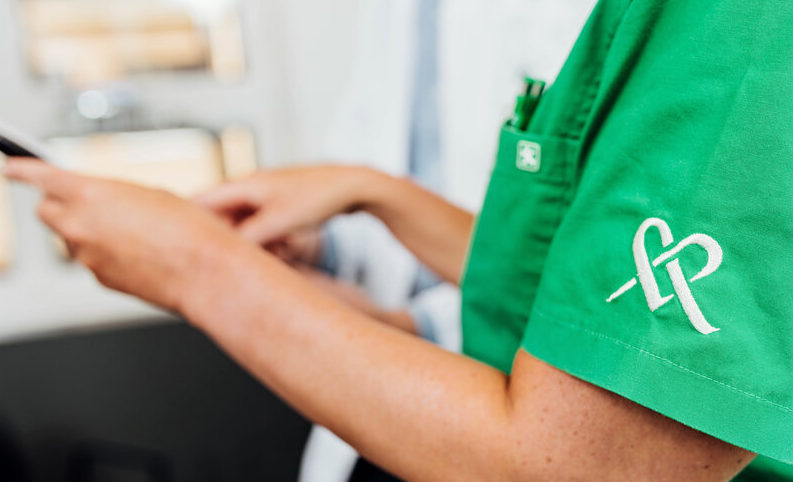
Modern technology and specialist staff
The Meliva MVZ Westpfalz Surgical Clinic in Landstuhl is proud to offer
its patients high-quality medical care. We are committed to caring for
our patients with the latest technologies and treatment methods.
Our doctors and medical assistants undergo regular training to further
their knowledge and refine their skills. This ensures that our range of
treatments is always fully up to date. We strive to offer our patients an
excellent standard of care and promote their well-being.


